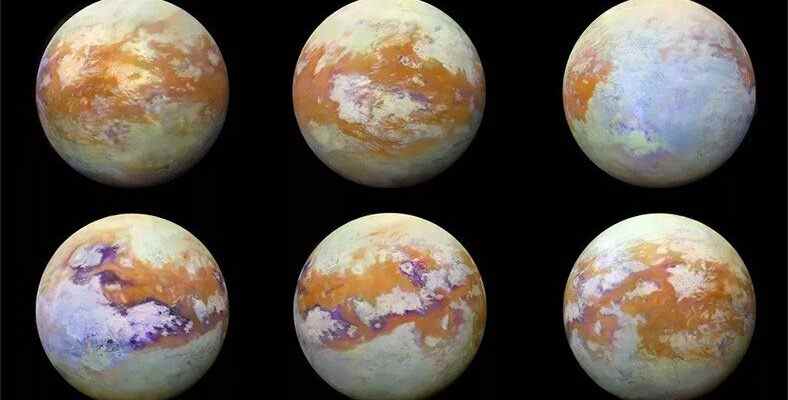Saturn’s moon Titan draws attention with its resemblance to Earth. So what is the reason for this similarity? Here is the explanation from the experts…
Saturn, which ranks sixth among the planets with its proximity to the Sun, is its moon. Titan with attention. Titan, one of Saturn’s largest moons, reminds us of Earth with its landscapes. Looking at both lakes and rivers SaturnIt is obvious that in many respects, it resembles our planet.
However, it should be underlined that the formations on Saturn are made of different geological materials. For example, it was previously explained that the water flowing from the rivers is replaced by liquid methane, and the winds blowing on the sand dunes are actually hydrocarbons. Different views of Earth-like landscapes in many aspects with components How it came into existence has caused a question mark in the minds of scientists for many years.
So what do experts say about Titan’s resemblance to Earth?
Saturn’s largest moon, Titan, was very curious because of its similarity to Earth. Curious questions about the subject, which has been studied for a while, were answered. “Since Titan’s sediments are theorized to be made of solid organic compounds, they are much more fragile than silicate-based sediments found on Earth,” the scientists said. So the nitrogen wind and liquid methane won’t be able to support Titan’s deposits, such a variety of structures. abrades to fine powder.
The researchers investigated the ooid deposit found on Earth, which has a composition similar to Titan. ooidsIt can be found in tropical waters, where it forms very fine grains due to its structure. The ooid, which simultaneously deposits material through chemical precipitation and erodes in the sea, maintains a consistent size as a result. Based on this component, the researchers also noted that a similar situation may occur on Titan.
RELATED NEWS
Is It Possible To Spend Long Space Travels By ‘Sleeping In A Capsule For Years’ Like In The Movies? A New Study Has Answered!
Lapôtre, one of the researchers, said in a statement; “We hypothesized that sintering, which involves the fusing of neighboring grains together, can offset wear as winds carry the grains.” He used his expressions. In addition, experts discovered that winds are more common at the equator of the moon, which provides optimal conditions for the development of sand dunes. These winds erode hard rock, which is converted into finer sediments, as on Earth. The reason for the similarity emerges precisely in the process here.
